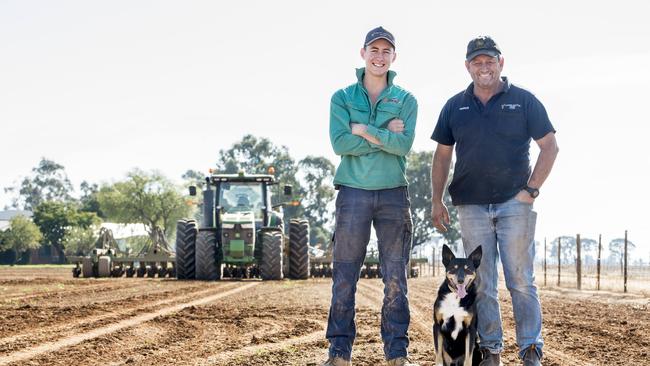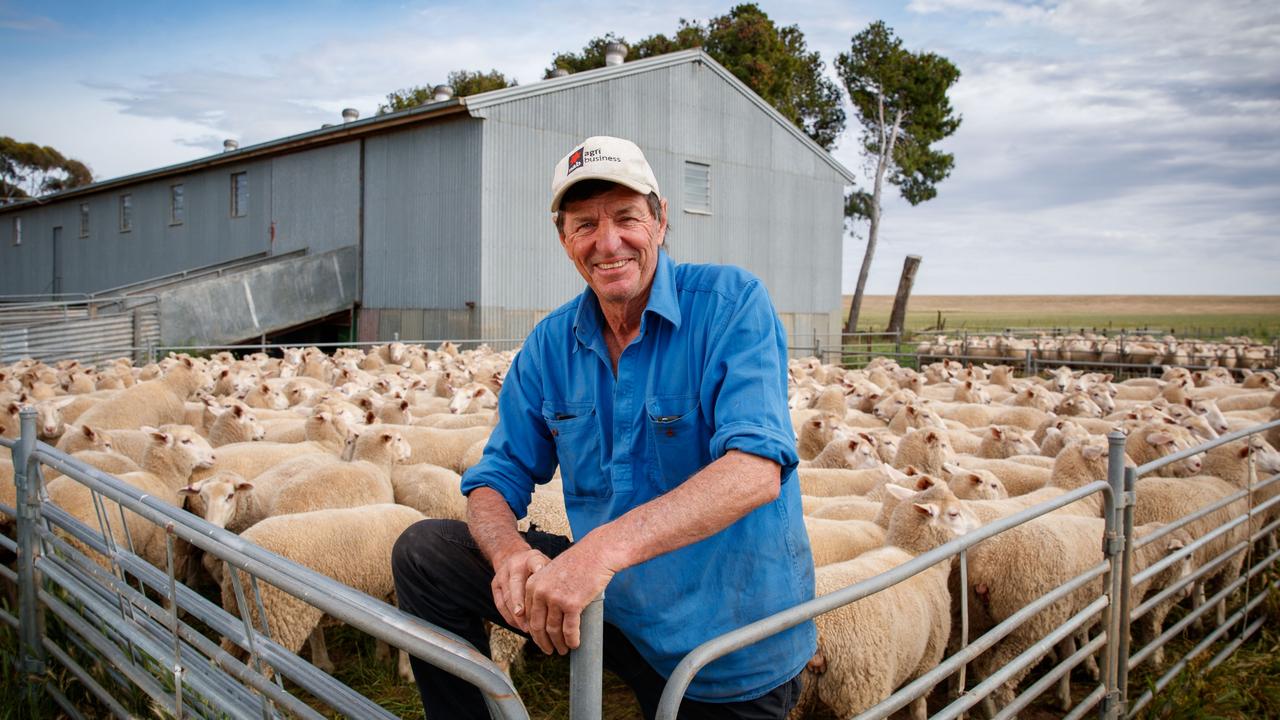Hay fever in the air for Elmore farmers
After good early rain, an Elmore cropper is punting on barley, but runs a diversified operation, writes Amelia Pepe.

GROWING hay for profit is not all beer and skittles.
But the reward — and the premium price tag attached — is well worth the gamble for fifth-generation farmer Darren Trewick, from Elmore in northern Victoria.
He runs a 2300ha business that includes wheat, barley, canola and oats. Oats for the export hay market is the main enterprise, with about 680ha set aside for the crop.
Darren said the secret to producing premium hay was to focus on quality, not quantity.
“We are at capacity for hay now,” he said. “It is a high-risk game, hay, with weather and all that stuff, we try and do it within our means.” Last season, Darren achieved the perfect duo; quality and quantity, which he described as a “rarity”.
“We have had some shocking years too. It’s not all beer and skittles,” he said.
“We have been growing export oaten hay for over 20 years and have had some atrocious years over that time.”
Darren aims for hay yields of about five to seven tonnes/ha. Anything more than that comes at the expense of quality.
“It brings the price down and puts costs up,” he said. “That seven tonnes (/ha) is the sweet spot.”
PERFECT RECIPE
ACHIEVING that ideal tonnage does not happen by accident.
Darren applies lime onto his paddocks to get pH levels back to ripe.
“We also try to match our fertiliser to how it looks like it will be growing,” he said.
The oaten hay also acts as a break crop, which helps with weed control, particularly blackleg and ryegrass resistance.
“For the cropping side of things it helps out the whole rotation and makes our weed burden not quite so bad,” Darren said.
There area hopes a new variety of canola being used will help fight the burdens of blackleg and ryegrass resistance.
“We are trying the 4510 canola for first time which is meant to be better for blackleg,” Darren said.
And after many years of using the same variety of wheat, Catapult wheat has instead been planted for the first time. It is expected to suit the region well.
“We couldn’t find anything that could beat that old variety, so this was recommended to us and we will see how it goes,” he said.
PLOUGHING ON
BARLEY plantings will remain the same this year for Darren despite China’s announcement of 80 per cent tariffs on the grain.
“We didn’t change our plantings at all,” he said. “People forget we put five million (tonnes) into Saudi Arabia and there may be other (markets) that open up.
“I don’t think it is the finish of it either.
“They could drop this tariff tomorrow.”
This season, Darren is aiming high with grain yields after already receiving as much rain as they did for the entirety of last year.
“Yields weren’t that flash last year because of the dry finish we had,” Darren said.
“The quality was OK, but the yields weren’t very good. We had a mixed bag.”
Last year, Darren said there was good opening rain before the season dried up completely.
“We started well last year, then it didn’t rain,” he said.
“We got the crops up and going and they were looking really good. Then it dried off and it just didn’t rain for a long time.”
But the long-term weather forecast is looking bright this year, with Darren banking on above-average rain during winter.
“If we can go down that track that will suit me fine,” he said.
“It gives us a bit of stored soil moisture as well for the following year.
“We do a lot of summer spraying here to try and retain that as well.”
This year’s soil moisture has shown a complete turnaround, after a dire zero last year.
“We had no stored soil moisture at the end of harvest last year,” Darren said.
“None at all. A lot of the paddocks that were worse than others had lucerne on them. Anything that had lucerne in paddocks were sucked dry.”
THEM’S THE BREAK
AFTER sowing dry for consecutive years, Darren planted into a good moisture profile this year.
“It was a good break,” he said.
“This year we have been able to sow with moisture and it has been a great start to our program really.”
Darren said ideal wheat yields could be four tonnes/ha this season while canola had the potential to return 2.5 tonnes/ha and “anywhere in between for the rest” of the cropping program.
In an effort to maximise moisture and assist soil structure, Darren has ramped up his use of direct-drilling during the past 10 years to the point that 90 per cent of crops are now sown using the method.
Darren has also continued to invest in the latest “bigger” and “stronger” farm equipment.
“We seem to be (always) updating something. As our enterprise gets bigger gear gets bigger,” he said.
Darren invested in a disc seeder about 15 years ago, which he said had suited his red sandy loam soil type.
“They work well in this area,” he said.
“Having smooth pads and no clods of dirt for the hay export market is fantastic. It works well with soil structure and with our plant establishment.”
Darren said he was always keeping an eye on new technology, and was interested in what drones could bring to his operation.
“I’m not sure where technology is heading with drones, but I am interested in that to help map out crops, but I don’t think it is quite there yet for the average farmer,” he said.
“It is amazing what they can do with drone technology now. Who knows where technology will go.”
MORE STORIES


